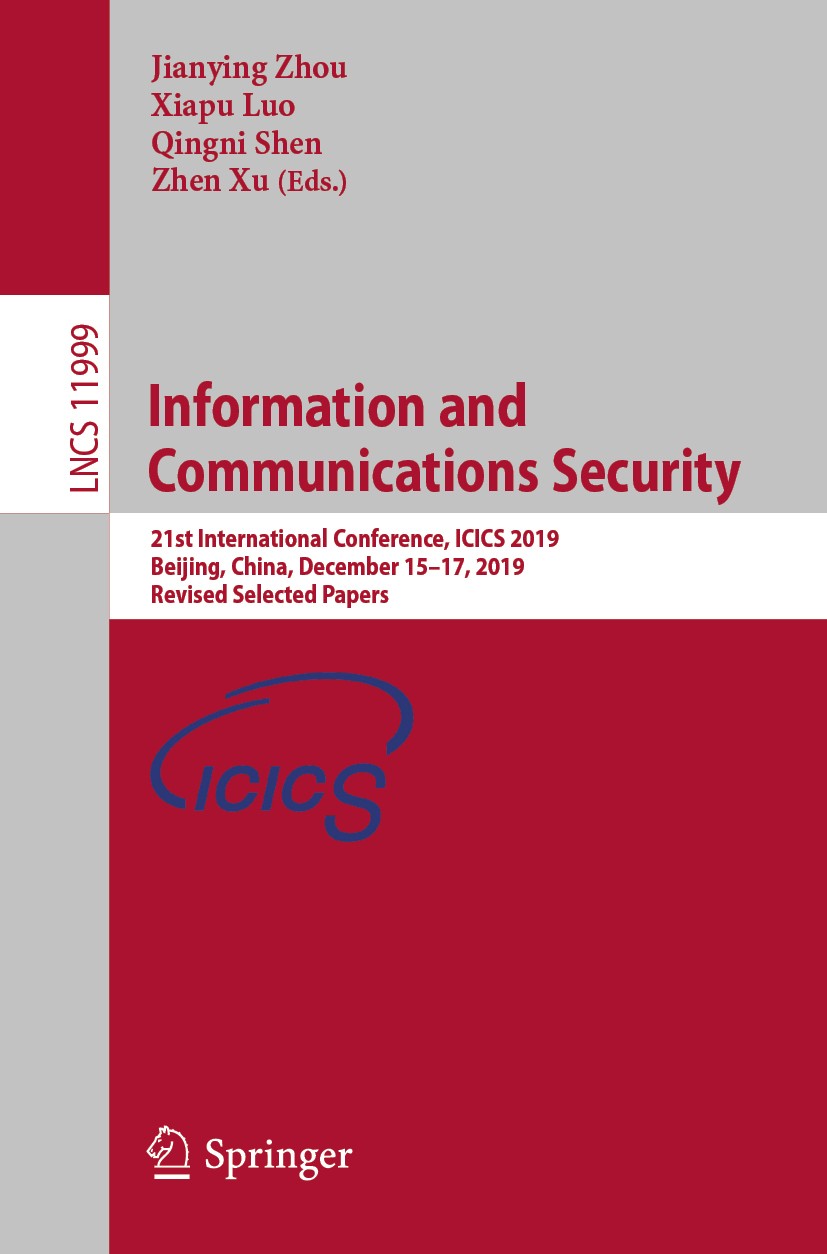| 书目名称 | Information and Communications Security | | 副标题 | 21st International C | | 编辑 | Jianying Zhou,Xiapu Luo,Zhen Xu | | 视频video | http://file.papertrans.cn/466/465893/465893.mp4 | | 丛书名称 | Lecture Notes in Computer Science | | 图书封面 |  | | 描述 | .This book constitutes the refereed proceedings of the 21th International Conference on Information and Communications Security, ICICS 2019, held in Beijing, China, in December 2019. The 47 revised full papers were carefully selected from 199 submissions. The papers are organized in topics on malware analysis and detection, IoT and CPS security enterprise network security, software security, system security, authentication, applied cryptograph internet security, machine learning security, machine learning privacy, Web security, steganography and steganalysis.. | | 出版日期 | Conference proceedings 2020 | | 关键词 | artificial intelligence; authentication; communication systems; computer crime; computer networks; comput | | 版次 | 1 | | doi | https://doi.org/10.1007/978-3-030-41579-2 | | isbn_softcover | 978-3-030-41578-5 | | isbn_ebook | 978-3-030-41579-2Series ISSN 0302-9743 Series E-ISSN 1611-3349 | | issn_series | 0302-9743 | | copyright | Springer Nature Switzerland AG 2020 |
The information of publication is updating

|
|
 |Archiver|手机版|小黑屋|
派博传思国际
( 京公网安备110108008328)
GMT+8, 2025-11-21 13:27
|Archiver|手机版|小黑屋|
派博传思国际
( 京公网安备110108008328)
GMT+8, 2025-11-21 13:27


